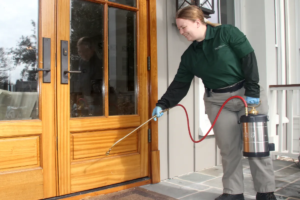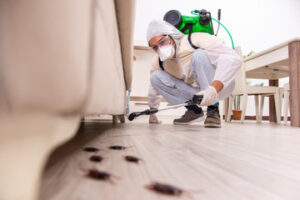Gaston Fence is a barrier that provides security, privacy, and property boundary delineation. It also helps to prevent children or pets from wandering off the property and keeps intruders away.

There are many different types of Fences and they can be made from a variety of materials. There are a few things to consider when choosing the proper fence for your property: Building codes, zoning laws, property lines and your budget.
A fence is a wall or any other artificially constructed barrier of any material that encloses, screens or separates areas. The term is also used to refer to a person’s personal privacy, which includes the right not to be observed or scrutinised. Privacy is a core value in many cultures, and it is protected by law in some countries. It is also a fundamental human right, as reflected in the European Charter of Fundamental Rights. The earliest definitions of privacy were not related to information, but rather to attempts to interfere with someone’s private affairs or control them. Today, however, privacy is often seen in a broader sense as the right to be free of uninvited intrusions into one’s life.
Normative analysis provides important insights into the nature and meaning of privacy. It allows us to disentangle the different justifications for different types of formal models of privacy and test whether or not they meet legal and ethical requirements. One of the most useful frameworks for this type of analysis is contextual integrity, which takes into account the interests and preferences of affected parties and societal contexts, functions, values, and uses.
Traditionally, fences (or compounders) are known as go-betweens who take the risk of selling stolen goods on behalf of a thief. They do this to reduce the thief’s transaction costs by reducing his or her need to contact each potential buyer directly, which could draw attention from law enforcement. Increasingly, e-fencing is taking place on online marketplaces such as Amazon or eBay. These platforms are not traditionally considered fences in the same way as traditional ones, but they may be viewed this way due to their failure to actively combat a growing number of instances of unauthorized and illegal transactions.
Security
A fence is a wall or barrier made of wood, metal, stone or other materials that encloses space or separates and secures parcels of land. A fence is also a system of security measures, such as locks and cameras, used to protect property from theft or trespassing. The word security can also refer to a person’s sense of safety and well-being. It may be the feeling of being safe or protected from danger, or it can refer to the security measures taken to prevent harm to others, such as guards at a parade or the police force.
The term “fencing” has been used both as a noun (a fenced property or area) and a verb (to fence stolen goods). A thief-taker or fence is an intermediary between the original thief and the final purchaser of stolen goods who may be unaware of the theft. A fence can also be a structure built by a farmer to confine livestock, such as cattle or horses.
Fences can be constructed from a variety of materials, including timber, steel and concrete. They can be freestanding or attached to buildings or other structures. They can be decorative as well, and some fences are designed to look like trees or other plants.
Fencing is an important component of property ownership, and it can be used to protect crops, pets and livestock. In some countries, it is a legal requirement for farmers to fence their land. In other cases, it is a matter of personal preference.
Often, fences are made of wires or other material that stretches across an open space to keep animals from wandering off. They can also be used to contain livestock, and they may also include a roof to provide shelter from rain or snow. Fences can be built to be high, and they are often topped with a gate for added security.
In the 19th century, it was common for large areas of public land to be fenced in with the intention of keeping livestock out. This was done to prevent the spread of disease and to protect people from the dangers of wild livestock.
Durability
A fence is a barrier that helps define property lines and keeps pets or children safe. It can also be a decorative feature for a garden or home. Fences can be made of wood, metal, glass or other materials. Durability is an important factor to consider when choosing a fencing material. A durable fence will withstand weathering, pests and other environmental elements.
The durability of a wooden fence depends on the type of wood and its upkeep. Cedar is one of the most durable wood options for fencing, with a lifespan of 30 years or more. Other wood options include spruce and pine, which can last 15 years or more with proper care. A pressure-treated wood fence can increase longevity, but it is still not as long-lasting as cedar.
Regular inspections of a wood fence can help identify issues early, such as rot or insect infestation. If a fence is in danger of rotting, check for soft, jagged or splintering areas of the wood. Typically, these areas are closest to the ground. It is also a good idea to examine the fence posts regularly. Those that are touching the ground are more likely to experience moisture problems.
Another way to extend the lifespan of a wood fence is to stain or paint it. Stain protects the wood from UV rays, which cause fading and can weaken its structure over time. It also adds a beautiful color to the fence and can prolong its life. Paint, on the other hand, may not last as long as a stain but it is still an effective protective measure.
Other types of fencing are also very durable, such as wrought iron and aluminum. These options are very strong and can withstand pests and weathering, but they are usually more costly than other types of fences. A metal fence can also be powder-coated in a variety of colors for added protection and to match the look of your home.
Aesthetics
The concept of aesthetics can be difficult to grasp. It can be defined as the sense of beauty and taste, or more generally, the appreciation of art or natural objects. It can also be defined as a philosophy of art or an area of philosophy that examines the nature and value of art. The philosophical study of aesthetics can be divided into several subfields, including the philosophy of art, the history of art, and the theory of beauty.
Aesthetics is the branch of philosophy that deals with the sense of beauty, taste, and artistic appreciation. It can be considered as a form of moral philosophy, although it is distinct from ethics and metaphysics. While it is not as rigorous as other fields of philosophy, it does provide valuable insight into the way that people evaluate different types of art.
Although the field of aesthetics is vast, some key issues have emerged over time. These include whether artworks are necessarily aesthetic objects; how to square the allegedly perceptual basis of aesthetic judgments with our giving reasons for them; how to distinguish between an aesthetic attitude and a practical one; and how to define the elusive concept of aesthetic experience.
In the eighteenth century, philosophical reflection on aesthetics shifted away from traditional, objective standards to a more personal and subjective approach to art. However, more recent developments in philosophical aesthetics have tended to have a skeptical cast, including questions about the use of the word “aesthetic,” the ability to articulate meaningful theoretical agreement or disagreement respecting any particular use, and whether the term ultimately answers any legitimate philosophical purpose.
The term “grunge aesthetic” refers to a style of clothing and makeup that is dark in color and has an overall gritty appearance. It is often associated with punk and gothic fashion. The aesthetic is characterized by dark tones, such as black and brown, as well as leather and denim pieces. The look is completed with a smoky eye and bright lipstick.
The etymology of the word “aesthetic” is disputed, with some claiming that it is related to the Greek words for “sensation.” Others suggest that it is derived from a Latin word that means “appreciation of the beautiful,” describing the enjoyment of art.








